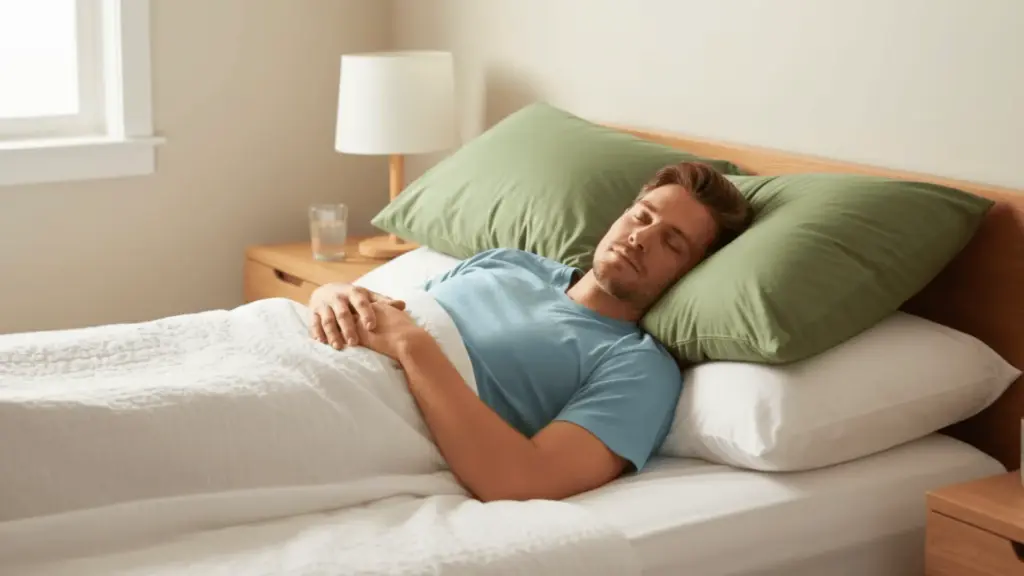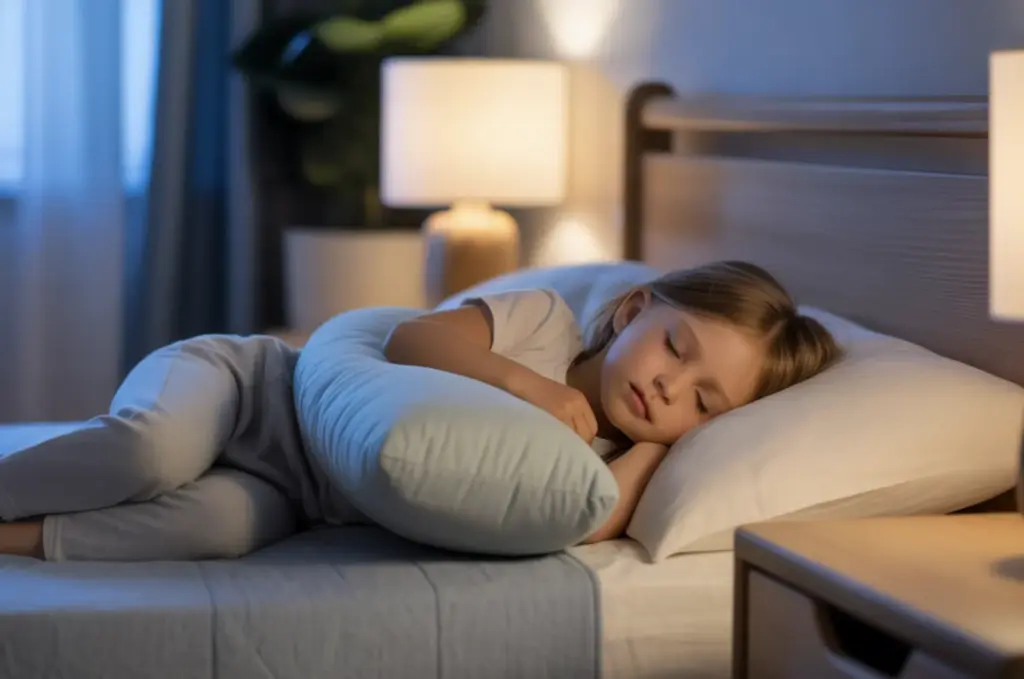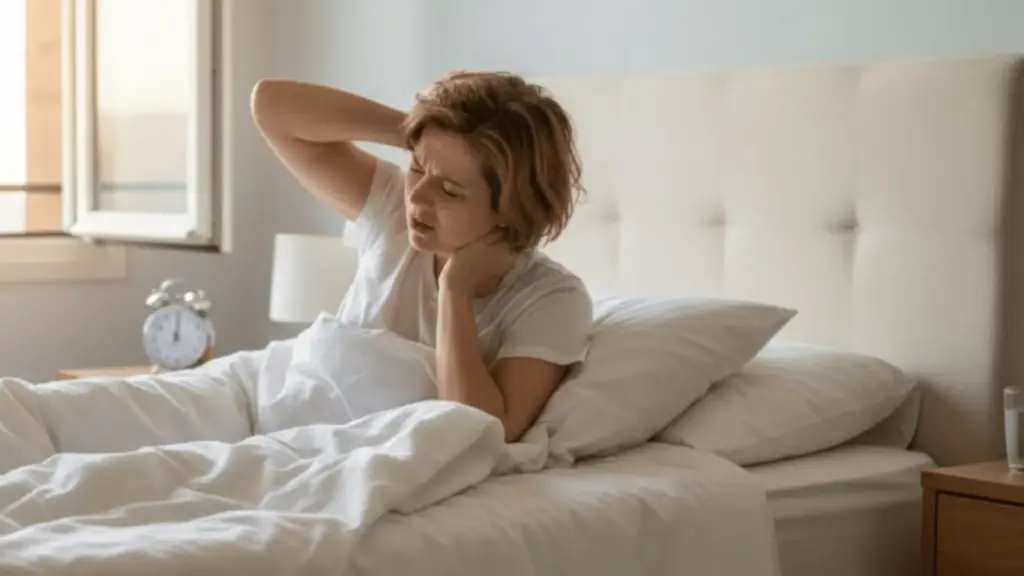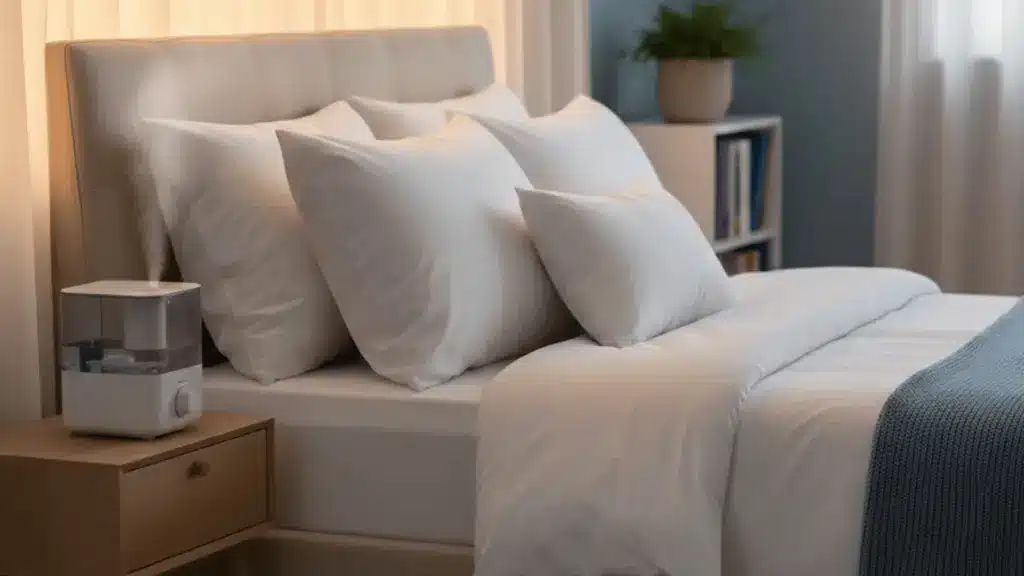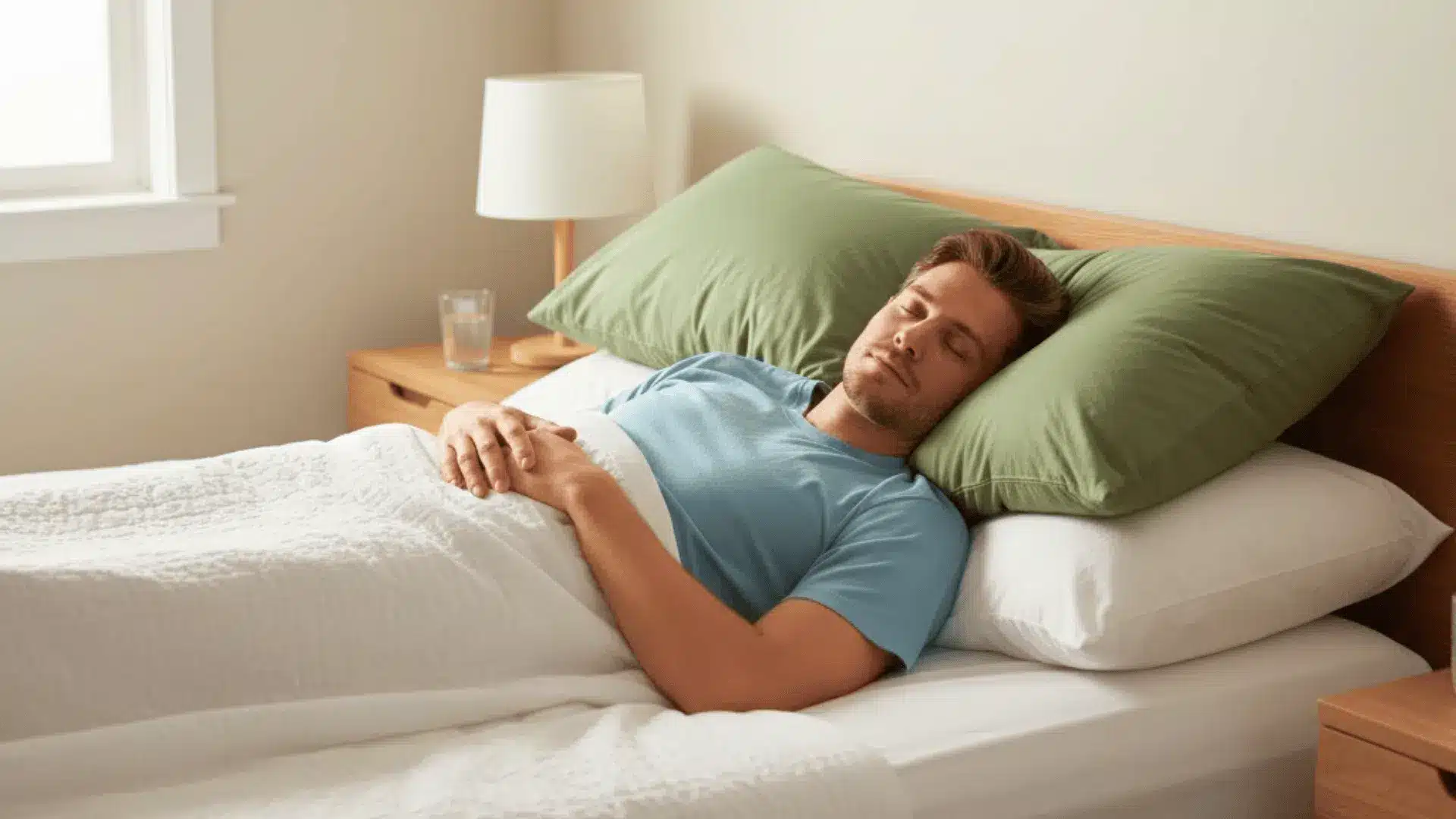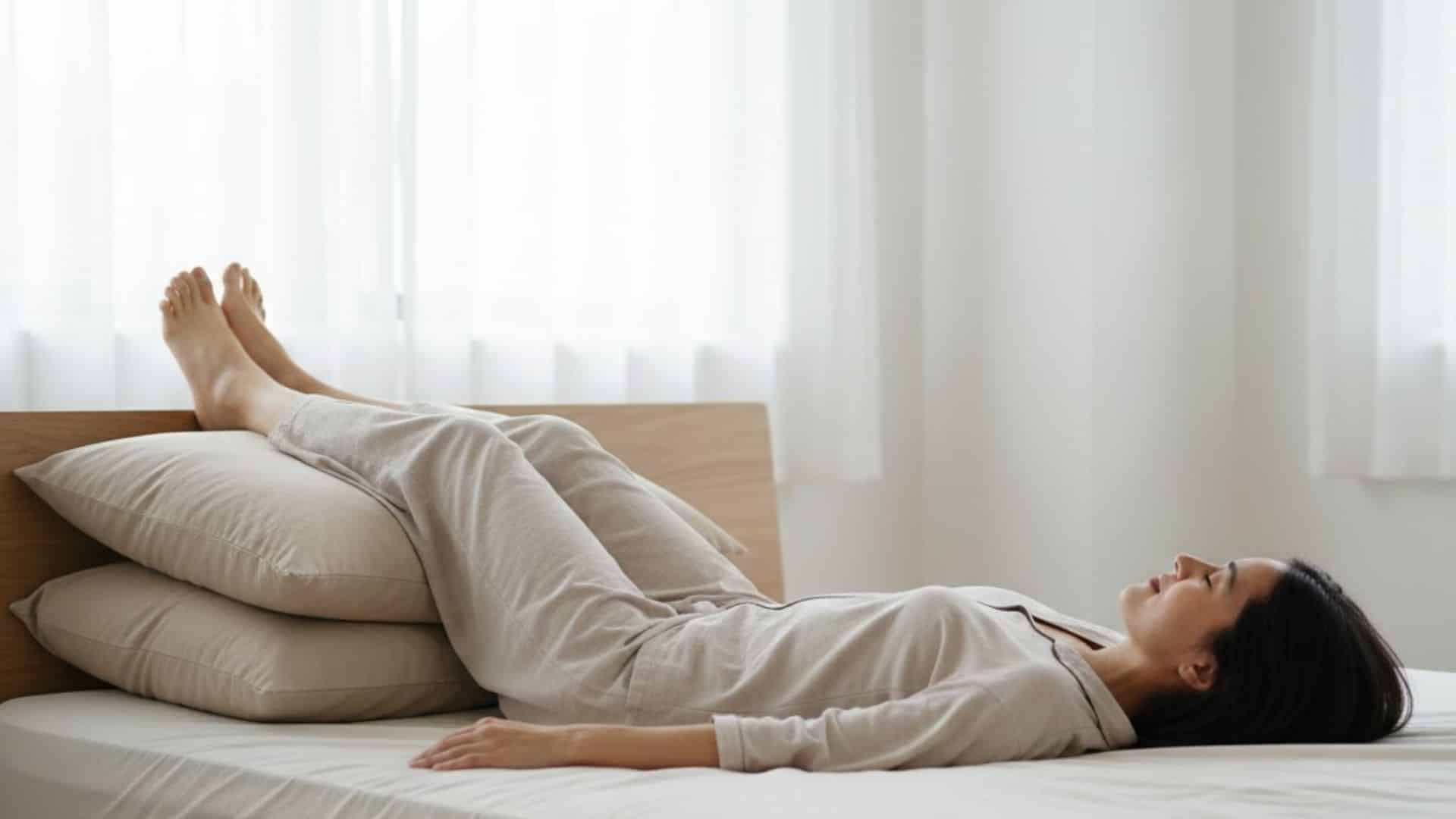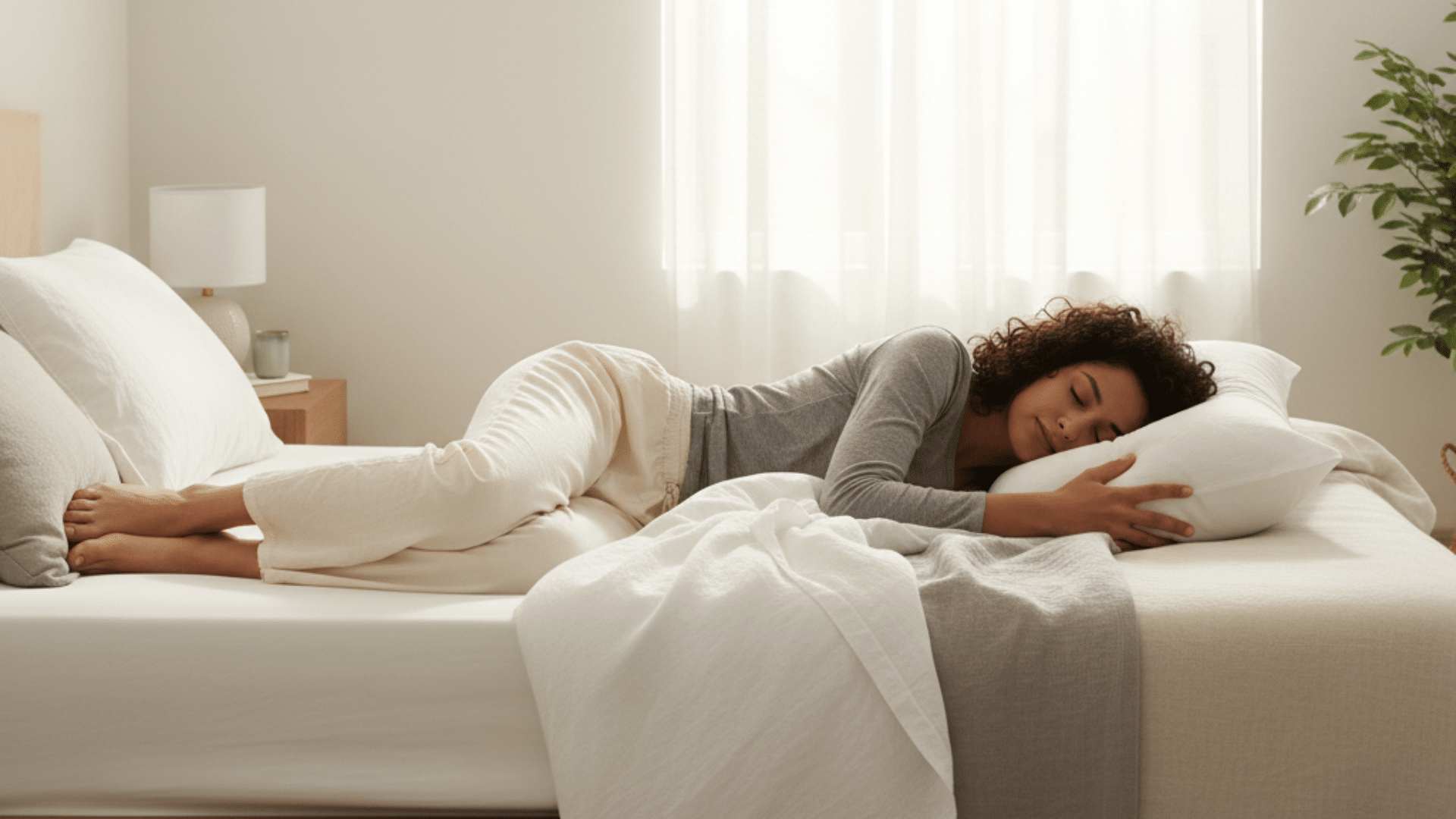If you’ve been dealing with a stuffy nose at night, you already know how hard it is to fall asleep. It can leave you tossing around and waking up tired.
The right position can make a real difference, and that’s why it helps to understand the best sleeping position for sinus drainage before you settle in.
In this guide, you’ll learn how your sleeping posture affects your sinuses and the steps you can take to breathe with less strain at night.
I’ll walk you through simple positions that support drainage, the habits that make symptoms worse, and a few routines that help you wake up clearer. My goal is to help you sleep with less pressure and more comfort.
Sleeping Position is Important for Sinus Drainage
Think about what happens when you lie completely flat. All that mucus in your sinuses has nowhere to go, so it just sits there, creating pressure and making you feel miserable.
Your sinuses can’t drain properly, and you wake up feeling even more congested than when you went to bed.
When you elevate your head, everything changes. Gravity becomes your friend. The mucus can flow naturally through your nasal passages and throat, rather than building up in your sinuses.
This is why so many people notice they feel better after propping themselves up with extra pillows.
Keeping your head above your heart level is the golden rule for sinus relief at night. It’s not complicated science; it’s just working with your body instead of against it.
The Best Sleeping Positions for Sinus Drainage
Now that you know which positions to avoid, you can focus on the ones that help your sinuses drain better and make breathing easier through the night.
1. Back Sleeping With Head Elevated
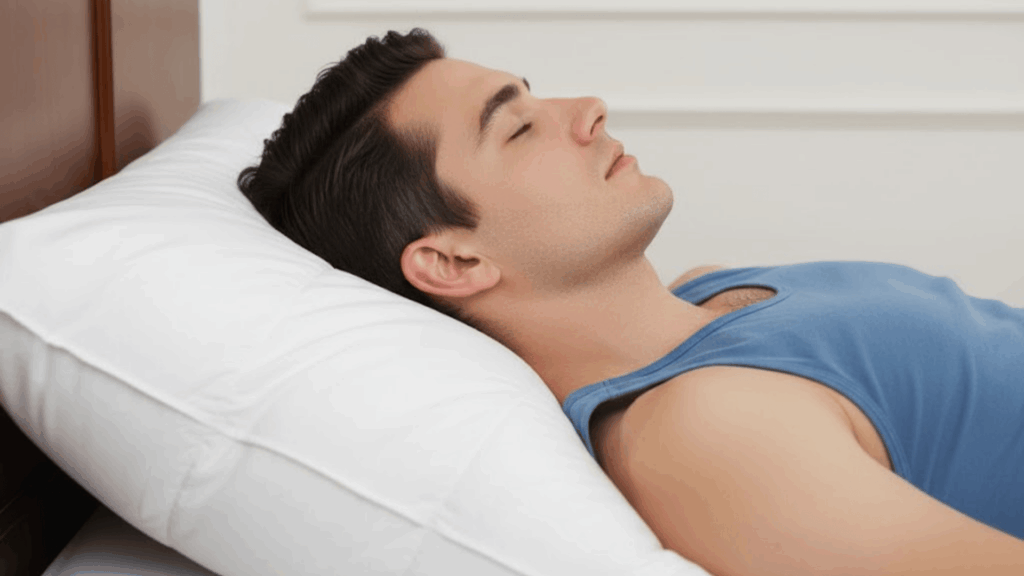
This position takes the top spot for good reason. When you sleep on your back with your head raised, you’re giving your sinuses the best chance to drain naturally.
How to do it:
- Stack 2-3 regular pillows under your head and shoulders
- Or use a wedge pillow (these work even better)
- Make sure your whole upper body is slightly angled, not just your neck
Why it helps:
- Reduces that annoying postnasal drip that makes you cough at night
- Eases sinus pressure and facial pain
- Helps you breathe easier through your nose
- Prevents morning headaches caused by mucus buildup
The key is finding the right height. You want to be elevated enough to feel the difference, but not so propped up that your neck feels strained.
2. Side Sleeping With Congested Side Facing Up

Sometimes one nostril feels completely blocked while the other is somewhat clear. This is where side sleeping becomes your secret weapon.
The rule to remember: Sleep on the opposite side from your congestion. If your right nostril is stuffed up, sleep on your left side.
Why it works:
- Gravity helps drain the open nostril even better
- The blocked side gets a chance to open up naturally
- Perfect when congestion is worse on one side
Just make sure you’re still using at least one good pillow to keep your head elevated. Lying completely flat on your side won’t help as much.
3. Sleeping in a Recliner
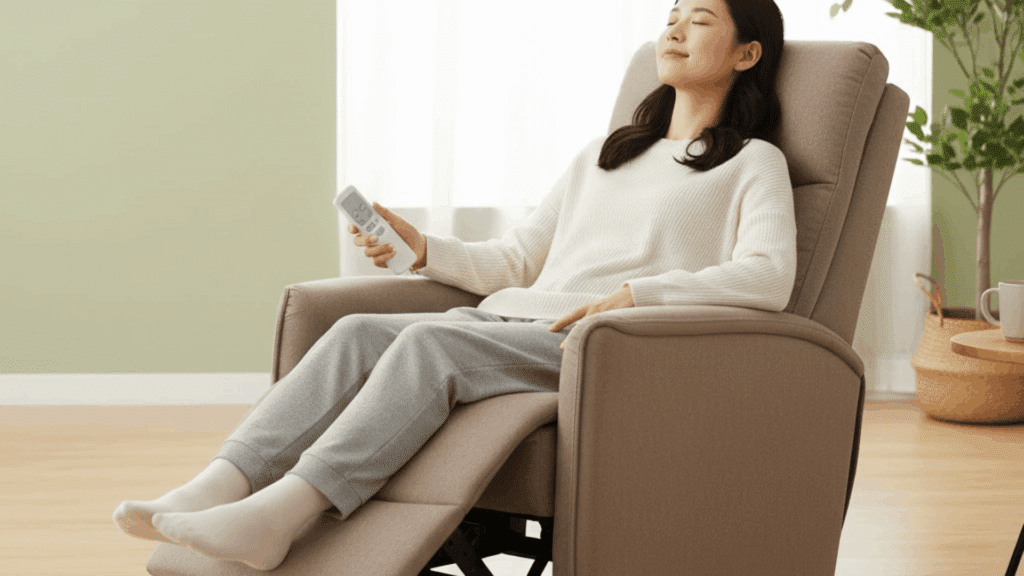
When sinus congestion is really bad, like during a full-blown sinus infection, a recliner might become your best friend for a few nights.
Benefits:
- Gives you maximum elevation without needing a pile of pillows
- Keeps you in a stable position all night
- Prevents waking up with a pounding headache
- Great for severe congestion that makes lying down unbearable
Many people report sleeping in a recliner for 2-3 nights during the worst of a sinus infection and finally getting some relief. It’s not about being fancy—it’s about finding what works when you’re really struggling.
4. Slightly Inclined Back Position (Using an Adjustable Bed or Stacked Pillows)
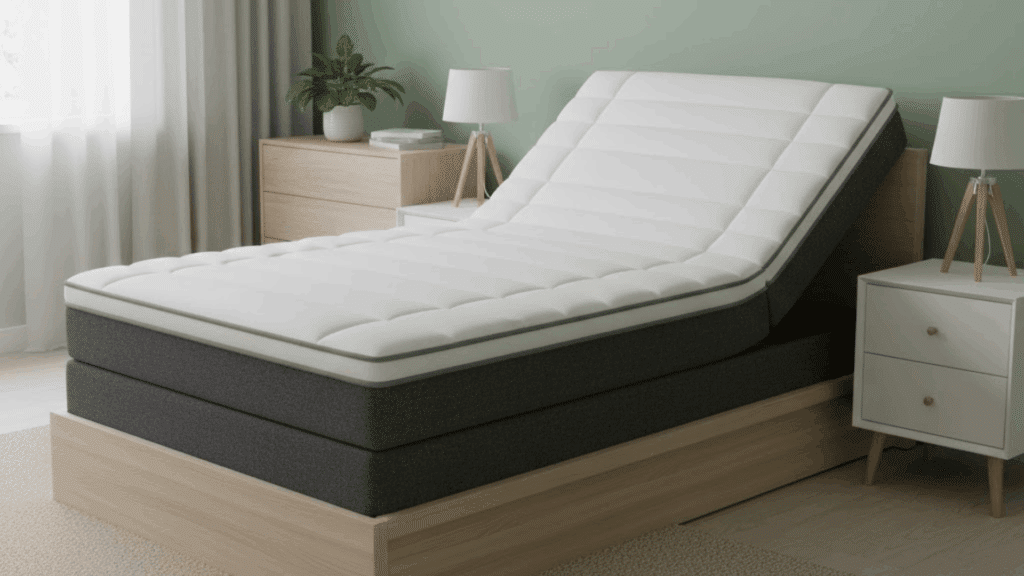
This position is like a gentler version of the recliner option. You’re not sitting straight up, but you’re definitely not flat either.
How to set it up:
- Use an adjustable bed frame if you have one (raised about 30-40 degrees)
- Or create an incline with pillows under your mattress or multiple pillows
- Keep your head, neck, and shoulders all supported
Best for:
- People who deal with sinus issues regularly
- Those who find full recline too upright
- Anyone who wants drainage benefits while still feeling like they’re “in bed”
5. The Hybrid Position: Side-Elevated Sleeping

This is a combination approach that works great if you’re a natural side sleeper but need the benefits of elevation. It’s perfect for people who just can’t get comfortable sleeping on their backs.
How to set it up:
- Place a wedge pillow or 2-3 stacked pillows under your upper body
- Lie on your side (congested side facing up)
- Use an additional pillow between your knees for comfort
- Make sure your head and shoulders are both elevated
Why it’s effective:
- Combines the drainage benefits of elevation with side sleeping comfort
- Keeps airways open while you sleep in your preferred position
- Reduces pressure on the lower nostril while draining the upper one
- Less likely to cause you to roll onto your back if you’re not used to it
Pro tip: Switch sides during the night if you wake up. This helps both sides drain evenly and prevents one nostril from staying congested all night.
What Not to Do: Positions that Make Things Worse
Just as important as knowing what helps is knowing what to avoid. These positions can make your sinus congestion feel worse:
- Don’t Sleep Completely Flat: When your head is at the same level as your body, mucus has nowhere to go. You’ll wake up more congested, with more pressure, and possibly with a headache. Plus, you might end up breathing through your mouth all night, which dries everything out even more.
- Avoid Sleeping on Your Stomach: Face-down sleeping is terrible for sinuses. It increases pressure on your face and sinuses, blocks proper drainage, and forces your neck into an uncomfortable position. You’re basically working against your body’s natural ability to clear out mucus.
- Don’t Sleep on The Congested Side: If you know one side is more blocked, don’t sleep on that side. You’ll only make the congestion worse and wake up feeling even more stuffed up.
By keeping these positions in mind and avoiding the ones that make symptoms worse, you’re ready to focus on the sleeping angles and setups that actually help your sinuses relax overnight.
How to Sleep With a Sinus Infection: Nighttime Routine Tips
When your sinuses are clogged, small steps before bed can make a big difference. A simple routine helps open your airways, reduce pressure, and set you up for better sleep.
Key things to do before bed:
- Clear your sinuses with steam, a warm shower, or a saline rinse
- Keep your room balanced with a clean humidifier set between 30–50 percent
- Drink warm fluids to thin mucus and stay hydrated
- Use a warm compress to relax pressure around your nose and cheeks
- Try safe over-the-counter helpers like nasal strips or saline spray
These steps prepare your body for easier breathing and help your sleeping position work even better through the night.
Morning Routine for Better Sinus Health
What you do when you wake up matters too. These simple steps can help you start the day breathing easier:
| Morning Sinus Relief Tip | How It Helps |
|---|---|
| Gentle sinus massage | Light circular pressure around the nose, cheeks, and forehead helps stimulate sinus drainage and ease pressure. |
| Nasal irrigation | Using a neti pot or saline squeeze bottle removes leftover mucus and irritants from overnight. |
| Warm fluids | Warm tea, lemon water, or broth helps thin mucus and keeps it moving for easier drainage. |
| Light movement | A short walk or gentle stretching boosts circulation, which naturally supports sinus drainage. |
These quick steps set you up for easier breathing in the morning, and they also support the rest of your sinus care routine throughout the day.
When to See a Doctor
Most sinus congestion clears up on its own within a week or so. But sometimes, you need professional help. Make an appointment if you notice:
- Fever above 101.5°F: Could signal a bacterial infection
- Symptoms lasting more than 10 days: Might need antibiotics
- Severe headache or facial swelling: Could be a more serious infection
- Vision changes or eye pain: Needs immediate attention
- Symptoms are getting worse instead of better: Even with home care
- Frequent sinus infections: You might have chronic sinusitis
- Difficulty breathing: Don’t wait on this one
Wrap Up
Finding the best sleeping position for sinus drainage can make your nights feel a lot easier.
You learned how small changes in the way you rest can help your sinuses clear, ease pressure, and let your body settle into deeper sleep. I hope these tips give you a simple plan you can use tonight.
Your comfort matters, and it helps to know you have a few clear steps to follow. Try different angles, keep your space set up for easy breathing, and pay attention to how your body responds.
If you want more ideas to support your home routine, feel free to look around the blog for more helpful posts.


